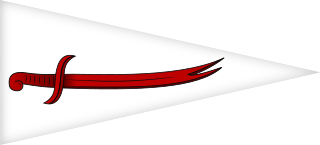 W
WIran sustained maritime forces during Afsharid dynasty that were revived in 1734 by Nader Shah, with peak of its activity lasting more than a decade until Division of the Afsharid Empire.
 W
WThe ancient Egyptian navy has a very extensive history almost as old as the nation itself. Our best sources over the type of ships they used and their purposes come from the reliefs from the various religious temples that spread throughout the land. While the early ships that were used to sail the Nile were often made out of reeds, the ocean and seagoing ships were then made out of cedar wood, most probably from the woods of Byblos in present day Lebanon. While the use of navy was not as important to the Egyptians as it may have been to the Greeks or Romans, it still proved its worth during the Thutmoside campaigns and even in defending Egypt under Rameses III. Thutmose III understood the importance in maintaining a fast and efficient communications and supply line that would connect his bases in the Levantine region with Egypt. For this reason, he constructed his famous dockyard for the royal fleet near Memphis, whose sole purpose was to constantly supply the campaigning Egyptian army with additional troops as well as communication with Egypt and general supplies.
 W
WThe Brandenburg Navy was the navy of the Margraviate of Brandenburg in Germany from the 16th century to 1701, when it became part of the Prussian Navy.
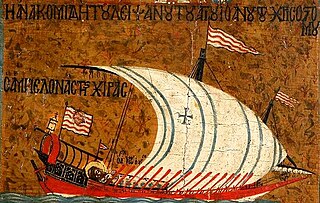 W
WThe Catalan navy - with Catalan ships, Catalan admirals and Catalan crew - under the direct or indirect orders of the counts of Barcelona, represented a reality recognized by the entire Mediterranean from its origins to Fernando the Catholic. In later times ships built and manned on the Catalan coasts, under the authority of non-Catalan kings, for example the kings of Naples, carried out some important events.
 W
WThe Chola Navy comprised the naval forces of the Chola Empire, a Tamil thalassocratic empire of southern India, one of the longest-ruling dynasties in the world. The Chola Navy grew in size and status during the Medieval Cholas reign. Between 900 and 1100 CE, the navy grew from a smaller entity to a potent maritime and diplomatic force across Asia, with maritime trade links extending from Arabia to China.
 W
WThe Confederate States Navy (CSN) was the naval branch of the Confederate States Armed Forces, established by an act of the Confederate States Congress on February 21, 1861. It was responsible for Confederate naval operations during the American Civil War against the United States's Union Navy.
 W
WThe Connecticut State Navy was the colonial navy of Connecticut during the American Revolutionary War. Established in 1775, all of its ships were destroyed or captured by 1779. In the remaining years of the war a few smaller ships were commissioned to interdict smuggling between the Connecticut shore and Tory-controlled Long Island.
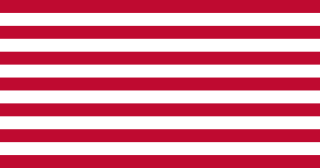 W
WThe Continental Navy was the navy of the United States during the American Revolutionary War, and was formed in 1775. The fleet cumulatively became relatively substantial through the efforts of the Continental Navy's patron John Adams and vigorous Congressional support in the face of stiff opposition, when considering the limitations imposed upon the Patriot supply pool.
 W
WThe navy of the Fatimid Caliphate was one of the most developed early Muslim navies and a major military force in the central and eastern Mediterranean in the 10th–12th centuries. As with the dynasty it served, its history can be distinguished into two phases. The first period, from c. 909 to 969, when the Fatimids were based in Ifriqiya, and the second period, lasting until the end of the dynasty in 1171, when the Fatimids were based in Egypt. During the first period, the navy was employed mainly in the constant warfare with the Byzantine Empire in Sicily and southern Italy, where the Fatimids enjoyed mixed success, as well as in the initially unsuccessful attempts to conquer Egypt from the Abbasids and the brief clashes with the Umayyad Caliphate of Córdoba.
 W
WThe Genoese Navy, also known as the Genoese Fleet, was the naval contingent of the Republic of Genoa's military. From the 11th century onward the Genoese navy protected the interests of the republic and projected its power throughout the Mediterranean Sea. It played a crucial role in the history of the republic as a thalassocracy and a maritime trading power.
 W
WDuring the American Revolutionary War, the Georgia State Navy consisted of only a few ships, most of which were destroyed in 1778 and 1779.
 W
WThe Greek People's Liberation Navy, commonly abbreviated as ELAN (ΕΛΑΝ), was the naval force of the communist-led Greek People's Liberation Army (ELAS) resistance movement during World War II, and later during the Greek Civil War.
 W
WThe Imperial Chinese Navy was the modern navy of the Qing dynasty of China established in 1875. An Imperial naval force in China first came into existence from 1132 during the Song dynasty and existed in some form until the end of the Qing dynasty in 1912. However, the "Imperial Chinese Navy" usually only refers to the Qing navy which existed between 1875 and 1912.
 W
WThe Imperial German Navy is the common English term for the Imperial Navy of the German Empire. It existed between 1871 and 1919, growing out of the small Prussian Navy, which primarily had the mission of coastal defence. Kaiser Wilhelm II greatly expanded the navy, and enlarged its mission. The key leader was Admiral Alfred von Tirpitz, who greatly expanded the size and quality of the navy, while adopting the sea power theories of American strategist Alfred Thayer Mahan. The result was a naval arms race with Britain as the German navy grew to become one of the greatest maritime forces in the world, second only to the Royal Navy. The German surface navy proved ineffective during World War I; its only major engagement, the Battle of Jutland, was a draw, but it kept the surface fleet largely in port for the rest of the war. However, the submarine fleet was greatly expanded and posed a major threat to the British supply system. The Imperial Navy's main ships were turned over to the Allies, but were scuttled at Scapa Flow in 1919 by German crews.
 W
WThe Imperial Japanese Navy was the navy of the Empire of Japan from 1868 until 1945, when it was dissolved following Japan's surrender in World War II. The Japan Maritime Self-Defense Force (JMSDF) was formed circa 1952–1954 after the dissolution of the IJN.
 W
WThe Imperial German Navy is the common English term for the Imperial Navy of the German Empire. It existed between 1871 and 1919, growing out of the small Prussian Navy, which primarily had the mission of coastal defence. Kaiser Wilhelm II greatly expanded the navy, and enlarged its mission. The key leader was Admiral Alfred von Tirpitz, who greatly expanded the size and quality of the navy, while adopting the sea power theories of American strategist Alfred Thayer Mahan. The result was a naval arms race with Britain as the German navy grew to become one of the greatest maritime forces in the world, second only to the Royal Navy. The German surface navy proved ineffective during World War I; its only major engagement, the Battle of Jutland, was a draw, but it kept the surface fleet largely in port for the rest of the war. However, the submarine fleet was greatly expanded and posed a major threat to the British supply system. The Imperial Navy's main ships were turned over to the Allies, but were scuttled at Scapa Flow in 1919 by German crews.
 W
WThe Khmer National Navy, was the naval component of the Khmer National Armed Forces (FANK), the official military of the Khmer Republic during the Cambodian Civil War between 1970 and 1975.
 W
WThe Kriegsmarine was the navy of Nazi Germany from 1935 to 1945. It superseded the Imperial German Navy of the German Empire (1871–1918) and the inter-war Reichsmarine (1919–1935) of the Weimar Republic. The Kriegsmarine was one of three official branches, along with the Heer and the Luftwaffe of the Wehrmacht, the German armed forces from 1935 to 1945.
 W
WThe Manchukuo Imperial Navy was the navy of the Japanese puppet state of Manchukuo.
 W
WThe Maratha Navy was the naval wing of the armed forces of the Maratha Empire, which existed from around mid-17th century to mid-18th century in India.
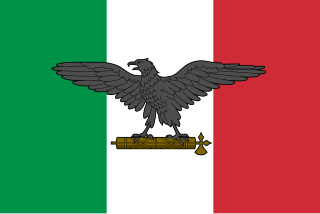 W
WThe Marina Nazionale Repubblicana was the navy of the Italian Social Republic, a German puppet state in Italy.
 W
WDuring most of the Middle Ages the Bulgarians did not maintain naval forces. The first records of Bulgarians ships come from the reign of Khan Omurtag: during his war against the Franks (827-829) he came with ships from the Danube and landed troops in the rear of the Franks.
 W
WOfficially called the Naval Force of Pennsylvania.
 W
WThe navy of the Order of Saint John, also known as the Maltese Navy after 1530, was the first navy of a chivalric order. It was established in the Middle Ages, around the late 12th century. The navy reached its peak in the 1680s, during the reign of Grand Master Gregorio Carafa. It was disbanded following the French invasion of Malta in 1798, and its ships were taken over by the French Navy.
 W
WNavy of the Ukrainian People's Republic was a marine military force of the Ukrainian People's Republic that was based on a free will of Imperial Russia sailors to pledge allegiance to Ukraine. The force was never fully operational as the country constantly fought for its survival with the neighboring Soviet Russia. Eventually most of the Black Fleet was either sunk by the Bolsheviks or become part of expeditionary force of the White movement on evacuation.
 W
WThe New Hampshire State Navy during the American Revolutionary War consisted of a single ship commissioned by the state of New Hampshire in 1779. The Hampden, a privateer owned by John Langdon, was purchased and outfitted by the state in August 1779 for use in what became known as the Penobscot Expedition. The Hampden was captured by the British Royal Navy, which eventually put it into service. The state also authorized the issuance of letters of marque and created an admiralty court to deal with marine matters, including the disposition of prizes brought in by privateers.
 W
WThe North Carolina State Navy during the American Revolutionary War consisted of a relatively modest number of ships, and was active from 1776 to 1779. The state and the Continental Congress were concerned about the defense of Pamlico Sound, and the key Ocracoke Inlet, through which a large number of inbound merchant ships traveled, bringing war-related supplies from Europe and the West Indies.
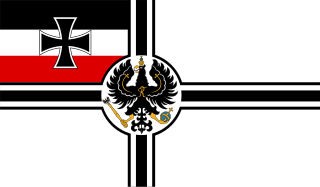 W
WThe North German Federal Navy, was the Navy of the North German Confederation, formed out of the Prussian Navy in 1867. It was eventually succeeded by the Imperial German Navy in 1871.
 W
WThe Papal Navy was the maritime force of the Papal States. Loosely construed, it was in sporadic existence from approximately the Battle of Ostia (849) during the pontificate of Leo IV until the ascension of Pope Leo XIII in 1878.
 W
WThe Pennsylvania Navy served as the naval force of Pennsylvania during the American Revolution and afterward, until the formation of the United States Navy. The navy's vessels served almost exclusively on the Delaware River, and were active in first defending the approaches to the city of Philadelphia during the British campaign that successfully occupied the city in 1777, and then preventing the Royal Navy from resupplying the occupying army.
 W
WThe Regia Marina was the navy of the Kingdom of Italy from 1861 to 1946. In 1946, with the birth of the Italian Republic, the Regia Marina changed its name to Marina Militare.
 W
WThe Reichsflotte was the first navy for all of Germany, established by the revolutionary German Empire to provide a naval force in the First Schleswig War against Denmark. The decision was made on 14 June 1848 by the Frankfurt Parliament, which is considered by the modern German Navy as its birthday.
 W
WThe Reichsmarine was the name of the German Navy during the Weimar Republic and first two years of Nazi Germany. It was the naval branch of the Reichswehr, existing from 1919 to 1935. In 1935, it became known as the Kriegsmarine, a branch of the Wehrmacht; a change implemented by Adolf Hitler. Many of the administrative and organizational tenets of the Reichsmarine were then carried over into the organization of the Kriegsmarine.
 W
WThe Republic of Vietnam Navy was the naval branch of the South Vietnamese military, the official armed forces of the former Republic of Vietnam from 1955 to 1975. The early fleet consisted of boats from France. After 1955 and the transfer of the armed forces to Vietnamese control, the fleet was supplied from the United States. With assistance from the U.S., the VNN became the largest Southeast Asian navy, with 42,000 personnel, 672 amphibious ships and craft, 20 mine warfare vessels, 450 patrol craft, 56 service craft, and 242 junks.
 W
WThe Rhode Island State Navy was the first colonial or state navy established after the American Revolutionary War began in April 1775 with the Battles of Lexington and Concord. On the following June 15, the General Assembly authorized the acquisition of two ships for the purpose of defending the colony's trade. The state's ships were generally used for defensive operations within Narragansett Bay, although some prizes were taken. The state was also one of the first to authorize privateering.
 W
WThe history of the Danish navy began with the founding of a joint Dano-Norwegian navy on 10 August 1510, when King John appointed his vassal Henrik Krummedige to become "chief captain and head of all our captains, men and servants whom we now have appointed and ordered to be at sea".
 W
WThe Royal East African Navy was a unified naval force of the former British colonies of Kenya, Tanganyika, Uganda, and Zanzibar. It was the colonial forerunner of the Kenyan Navy and Tanzanian Navy. Formed in 1953, it was disbanded in 1962.
 W
WThe Royal Lao Navy was the naval component of the Royal Lao Armed Forces (FAR), the official military of the Royal Lao Government and the Kingdom of Laos during the Laotian Civil War between 1960 and 1975.
 W
WThe Royal Sardinian Navy was the naval force of the Kingdom of Sardinia. The fleet was created in 1720 when the Duke of Savoy, Victor Amadeus II, became the King of Sardinia. Victor Amadeus had acquired the vessels be used to establish the fleet while he was still the King of Sicily in 1713. The Sardinian Navy saw action in a number of conflicts, including the French Revolutionary Wars and the Napoleonic Wars from the 1790s to 1810s, limited actions against the Barbary Coast such as the Battle of Tripoli in 1825, and the Second Italian War of Independence in 1859. The last war was a major step toward Italian unification, which led to the creation of a united Italian state in 1861. During the fighting in 1860, the Royal Neapolitan Navy defected to Sardinia and placed itself under Sardinian control; in 1861, the navy also absorbed the Royal Sicilian Navy, resulting in the creation of the Regia Marina, which itself became the Marina Militare, the modern Italian navy, in 1946.
 W
WThe Royal Navy, commonly the Royal Yugoslav Navy, was the naval warfare service branch of the Kingdom of Yugoslavia. It was brought into existence in 1921, and initially consisted of a few former Austro-Hungarian Navy vessels surrendered at the conclusion of World War I and transferred to the new nation state under the terms of the Treaty of Saint-Germain-en-Laye. The only modern sea-going warships transferred to the new state were twelve steam-powered torpedo boats, although it did receive four capable river monitors for use on the Danube and other large rivers. Significant new acquisitions began in 1926 with a former German light cruiser, followed by the commissioning of two motor torpedo boats (MTBs) and a small submarine flotilla over the next few years. When the name of the state was changed to Yugoslavia in 1929, the name of its navy was changed to reflect this. In the late 1920s, several of the original vessels were discarded.
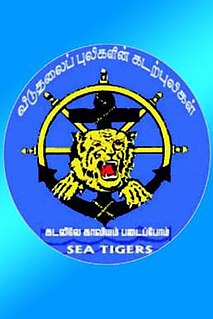 W
WThe Sea Tigers was the naval wing of the Liberation Tigers of Tamil Eelam during the Sri Lankan Civil War. It was founded in 1984. The Sea Tigers had a number of small but effective suicide bomber vessels. During its existence it had gained a reputation as a capable adversary for the Sri Lankan Navy. Over the years the Sea Tigers had sunk at least 29 Sri Lankan small inshore patrol boats and one freighter.
 W
WA South Carolina Navy has been formed twice by the State of South Carolina. The first time was during the American Revolutionary War, in which the state purchased and outfitted armed vessels independent of the Continental Navy. The second time was during the American Civil War, when its navy was also distinct from the Confederate States Navy.
 W
WThe Soviet Navy was the naval warfare uniform service branch of the Soviet Armed Forces. Often referred to as the Red Fleet, the Soviet Navy made up a large part of the Soviet Union's strategic planning in the event of a conflict with the opposing superpower, the United States, during the cold war period between the two countries. The influence of the Soviet Navy played a large role in the events involving the Cold War (1945-1991), as the majority of conflicts centred around the American-led NATO alliance in western Europe or power projection to maintain its sphere of influence in eastern Europe.
 W
WThe Spanish Republican Navy was the naval arm of the Armed Forces of the Second Spanish Republic, the legally established government of Spain between 1931 and 1939.
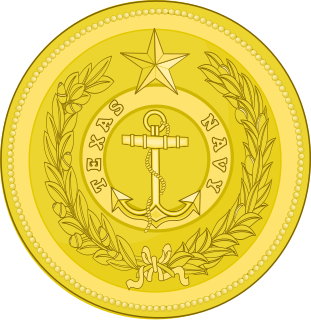 W
WThe Texas Navy, officially the Navy of the Republic of Texas, also known as the Second Texas Navy, was the naval warfare branch of the Texas Military Forces during the Republic of Texas. It descended from the Texian Navy, which was established in November 1835 to fight for independence from Centralist Republic of Mexico in the Texas Revolution. The Texas Navy, Texas Army, and Texas Militia were officially established on September 5, 1836 in Article II of the Constitution of the Republic of Texas. The Texas Navy and Texas Army were merged with the United States Armed Forces on February 19, 1846 after the Republic of Texas became the 28th state of the United States.
 W
WThe Venetian navy was the navy of the Venetian Republic, and played an important role in the history of Venice, the Republic and the Mediterranean world. The premier navy in the Mediterranean for many centuries, from the medieval to the early modern period, it gave Venice a control and influence over trade and politics in the Mediterranean far in excess of the size of the city and its population. It was one of the first navies to mount gunpowder weapons aboard ships, and through an organised system of naval dockyards, armouries and chandlers, was able to continually keep ships at sea, and to rapidly make good any losses.
 W
WA Virginia State Navy existed twice. During the American Revolutionary War, the provisional government of the Virginia Colony authorized the purchase, outfitting, and manning of armed vessels to protect the colony's waters from threats posed it by the Royal Navy.
 W
WThe Volksmarine was the naval force of the German Democratic Republic (GDR) from 1956 to 1990. The Volksmarine was one of the service branches of the National People's Army and primarily performed a coastal defence role along the GDR's Baltic Sea coastline and territorial waters.